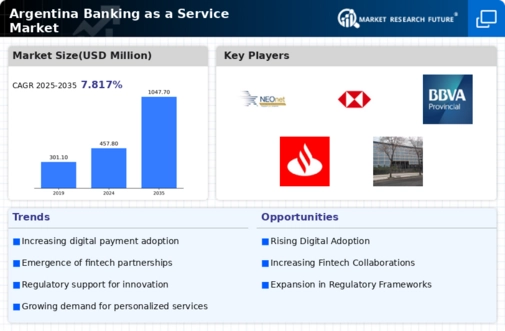The Argentina Banking as a Service Market (BaaS) market is swiftly evolving, driven by the increasing demand for digital financial services and the growing trend of fintech solutions. As traditional banking models encounter challenges from technological advancements and shifting customer expectations, BaaS providers are stepping into the spotlight, enabling businesses to offer banking services without holding banking licenses. This market presents a unique competitive landscape in which agility, tech infrastructure, and regulatory compliance play critical roles.
In Argentina, various players are focusing on leveraging innovative technologies to provide seamless financial solutions, catering to an increasingly tech-savvy population that seeks convenience and efficiency in banking services. The competitive dynamics are shaped by the interplay of established financial institutions and agile fintech players that are redefining banking experiences.
Ualá stands out in the Argentina Banking as a Service Market with its strong value proposition that combines a user-friendly mobile app with a prepaid Mastercard, effectively democratizing access to banking for a broad demographic. The company has built a substantial market presence by focusing on financial inclusion and providing users with tools for financial management, making it particularly appealing to unbanked and underbanked individuals. Ualá's strengths lie in its ability to easily reach customers onboard, offering services that include personal loans, investment opportunities, and payment solutions.
Its focus on customer experience has fostered a loyal user base, positioning it as a significant player within the BaaS framework in Argentina. Through strategic partnerships and collaborations, Ualá continues to enhance its value proposition and expand its reach in the local market. Neon, another prominent player in the Argentina Banking as a Service Market, emphasizes digital banking solutions that are designed specifically for the mobile-first generation.
The company provides an array of services, including digital accounts, debit cards, and personal finance management tools, all accessible via its intuitive mobile application. Neon has successfully carved out a niche by focusing on transparency and user empowerment, which resonates with Argentine consumers increasingly seeking alternatives to traditional banking. Its ability to integrate modern financial technologies positions it advantageously in a competitive landscape. Additionally, Neon has demonstrated strength through strategic mergers and acquisitions that have allowed it to broaden its service offerings and enhance its technological capabilities.
By continuously innovating and responding to customer needs, Neon has established a robust presence in the Argentina BaaS sector, reflecting its commitment to redefining the banking experience in the region.
















Leave a Comment